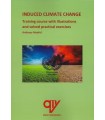FOOD CHEMISTRY
Given the importance of food, there are many universities and technical schools that have degrees in Food Technology, where the composition and chemical properties of food are studied in depth. This book is addressed to students and professors of food chemistry and professionals from the agri-food sector who wish to have some knowledge about the chemistry of food and its manufacturing processes. The most current knowledge related to food, its chemical composition, properties, nutritional value, people's energy expenditure, food additives, nutritional labeling, people's weight (Body Mass Index, BMI) are presented. And functional foods, genetically modified foods, antioxidants, omega-3 fatty acids, probiotics, prebiotics, food and nutritional safety, etc.
A study of each specific food is also made: milk, cheese, yogurt, meats, sausages, fish, shellfish, fats, oils, juices, jams, nectars, eggs, sugars, flours, breads, cakes, cocoa, chocolate, candies, nougat, cookies, sauces, nuts, honey, coffee, tea, etc. Equipment and techniques for preparing and packaging all types of food are studied, such as those mentioned in the previous paragraph. Practical exercises are included in each chapter, with the solutions at the end of the book. Thus, this work is of great interest for TRAINING COURSES. Of course, it is a very suitable reference book for professionals in the food sector, official bodies, companies dedicated to providing training courses, teachers and students, etc.
Detalles del libro
- Año
- 2023 (1ª Edición)
- Nº Páginas
- 226 and 95 black and white and COLOUR (with graphs, diagrams, tables with data of interest, photos).
- Autor
- Antonio Madrid Vicente (Engineer and scientific disseminator).
- Tamaño
- 24 X 17 cms. - Weight: 0,700 Kgrs.
- ISBN
- 9788412643381
ÍNDICE COMPLETO DEL LIBRO:
Chapter 1 BIOCHEMISTRY OF FOOD. 1.- What is biochemistry. 2.- Metabolism, catabolism and anabolism. 3.- Food. 4.- Definition of nutrients. 5.- Simple and complex foods. 6.- Foods rich in proteins, fats or carbohydrates. 7.- Food, health and performance at work. 8.- Practical exercises. Solutions at the end of the book.
Chapter 2 NUTRITIONAL VALUE OF FOODS. 1.- The nutrition of human beings. 2.- Energy contribution of food. 3.- The calorie. 4.- Energetic value of the main nutrients. 5.- Basal and total energy expenditure. 6.- The weight of people (Body Mass Index, BMI). 7.- Law of the minimum. 8.- Importance of food in humans. 9.- Nutritional studies. 10.- Practical exercises. Solutions at the end of the book.
Chapter 3 THE ENERGY EXPENDITURE OF PEOPLE. 1.- The energy. 2.- People's energy expenditure. 3.- Physical activity. 4.- Practical exercises. Answers at the end of the book.
Chapter 4 FOOD COMPOSITION. 1.- Food composition. 2.- Food components. 3.- We are what we eat. 4.- Diets. 5.- Practical exercises. Solutions at the end of the book.
Chapter 5 WATER IN FOOD. 1.- The water molecule. 2.- The oxygen of the water. 3.- The hydrogen of water. 4.- Properties of water. 5.- Links by hydrogen bonds. 6.- Water phase diagram. 7.- Surface tension of water. 8.- The capillarity of water. 9.- Water as a universal solvent. 10.- The density of water. 11.- Electrolysis of water. 12.- Hydrogen oxide. 13.- The specific heat of water. 14.- Distilled water, soft water and hard water. 15.- Bacteria in water and food. 16.- Practical cases. Solutions at the end of the book.
Chapter 6 PROTEINS. 1.- Definition. 2.- Structure of proteins. 3.- Properties of proteins. 4.- Classification of proteins. 5.- Proteins present in food. 6.- Biological value of proteins. 7.- Essential and non-essential amino acids. 8.- Protein needs of humans. 9.- Functions of proteins. 10.- Practical exercises. Solutions at the end of the book.
Chapter 7 LIPIDS. 1.- Definition. 2.- Classification of lipids. 3.- Fats and oils. 4.- Origin of oils and fats. 5.- Fatty acids in animals. 6.- Composition of animal fats. 7.- Properties of animal fats. 8.- Vegetable oils and fats. 9.- Functions of oils and fats. 10.- Omega-3 and Omega-6 fatty acids. 11.- Functional foods. 12.- Omega-6 fatty acids. 13.- Cholesterol. 14.- Types of cholesterol. 15.- Foods rich and poor in cholesterol. 16.- Practical exercises. Solutions at the end of the book.
Chapter 8 CARBOHYDRATES. 1.- Definition. 2.- The chlorophyll function. 3.- Classification of carbohydrates. 4.- Glucose. 5.- Fructose. 6.- Galactose. 7.- Sucrose. 8.- Maltose. 9.- Lactose. 10.- Starch. 11.- Cellulose. 12.- Glycogen. 13.- The fiber. 14.- Fiber classification. 15.- Fiber functions. 16.- Functions of carbohydrates. 17.- Practical exercises. Solutions at the end of the book.
Chapter 9 MINERAL SALTS. 1.- The salts in our body. 2.- Calcium. 3.- Phosphorus. 4.- Iron. 5.- Potassium. 6.- The salt. 7.- Trace elements. 8.- Practical exercises. Solutions at the end of the book.
Chapter 10 VITAMINS. 1.- Water soluble and fat soluble vitamins. 2.- Vitaminneeds. 3.- Vitamin A. 4.- Vitamin D. 5.- Vitamin E. 6.- Vitamin K. 7.- Water-soluble vitamins. 8.- Vitamin C. 9.- Practical exercises. Solutions at the end of the book.
Chapter 11 CHEMISTRY OF MILK AND DAIRY PRODUCTS. 1.- Milk and dairy products. 2.- The cream. 3.- Butter. 4.- Evaporated milk and concentrated milk. 5.- Condensed milk. 6.- Powdered milk. 7.- Yogurt. 8.- Cheese: definition and manufacture. 9.- Ice cream: definition and characteristics. 10.- Practical exercises. Solutions at the end of the book.
Chapter 12 CHEMISTRY OF MEAT AND MEAT PRODUCTS. 1.- The meat. 2.- The birds. 3.- Meat products. 4.- Sausages. 5.- Preparation of cured ham. 6.- Practical exercises. Solutions at the end of the book.
Chapter 13 CHEMISTRY OF FISH AND FISH PRODUCTS. 1.- Fish, shellfish and cephalopods. 2.- Derivative products. 3.- Conservation. 4.- Nutritive value of fish. 5.- Salting the fish. 6.- Smoked fish. 7.- Cooking the fish. 8.- The surimi. 9.- Krill proteins. 10.- Production of fish liver oil. 11.- Solved practical exercises. Solutions at the end of the book.
Chapter 14 CHEMISTRY OF OILS AND FATS. 1.- Vegetable oils. 2.- Olive oil. 3.- Oilseed oils. 4.- Soybean oil. 5.- Sunflower oil. 6.- Palm oil. 7.- Corn germ oil. 8.- Rapeseed oil. 9.- Practical exercises. Solutions at the end of the book.
Chapter 15 CHEMISTRY OF OTHER FOODS. 1.- Eggs and egg products. 2.- Classification and commercial labeling of eggs. 3.-Jams and fruit jellies. 4.- Honey: composition and properties. 5.- Fruits and their derivatives. 6.- Ketchup sauce. 7.- Cereal flours. 8.- Bread and its composition. 9.- The coffee. 10.- The chocolate. 11.- The tea. 12.- Nuts. 13.- Spices and condiments. 14.- Practical exercises. Solutions at the end of the book.
Annex 1 BOOKS PUBLISHED BY AMV PUBLISHERS.
ANSWERS TO PRACTICAL EXERCISES.












